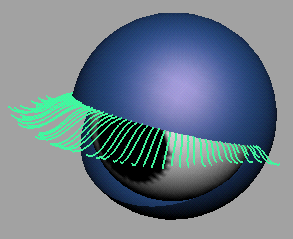Add body fur
As a
starting point, you can add fur to your model and set global fur
attributes so that the fur is even and grows in approximately the
desired direction. See
To add body fur.
After adding fur and
setting global fur attributes, you can use Maya Artisan to paint
most fur attributes locally. See the following:
To add body fur
- Select all surfaces you want to have
fur.
- Attach fur to the surfaces (
Fur > Attach Fur Description > New).
- Select the fur feedback (click a feedback
hair) and in the INPUTS section of the Channel Box,
change the name of the fur description from FurDescription1 to something
meaningful (for example, bodyFur).
- Change the length of the fur, if necessary.
- If the fur appears to be growing inwards
(or appears bald) on some surfaces, reverse the fur normals on these
surfaces:
- Select the fur feedback or the surfaces
where fur appears to grow inward (or appears bald).
- Reverse fur normals (
Fur > Reverse Fur Normals).
- To get more feedback on surfaces (for
example, on large surfaces), increase the number of sample hairs:
- Select the fur feedback on the surface
where you want more feedback.
- In the SHAPES section
of the Channel Box, set the U
Samples and V Samples to
a higher value.
- Make the fur lie flatter to the skin
of the animal by increasing the Inclination value.
- If the fur grows in a different direction
on some surfaces, offset the polar direction for these surfaces.
- Set the fur color by doing one of the
following:
- For more natural looking fur, add some Scraggle to
the fur.
To
make the nose bald
- Select the surfaces that make up the
nose.
- Select
Fur > Paint Fur Attributes Tool >
 .
.
- In the Paint Fur Attributes
Tool Settings window, select Baldness from the Fur
Attribute drop-down list.
- In the Tool Settings editor,
set the Value to 0.
- Dolly in on the nose and carefully paint
away the hairs.
To change the fur length around the muzzle
- Select the body surface.
- Select
Fur > Paint Fur Attributes Tool>
 .
.
- In the Paint Fur Attributes
Tool Settings window, select Length from the Fur
Attribute drop-down list.
- In the Tool Settings editor,
set the Value to be less than 1 (how
much less depends on how short you want the fur).
- Paint around the muzzle to shorten the
fur.
To comb the fur
- Select the fur feedback or the surface
with fur you want to comb.
- Select
Fur > Paint Fur Attributes Tool >
 .
.
- In the Paint Fur Attributes
Tool Settings window, select Direction from the Fur
Attribute drop-down list.
- Brush along the fur. The fur is combed
in the direction of your brush stroke.
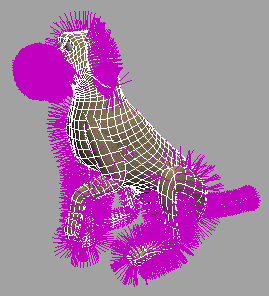


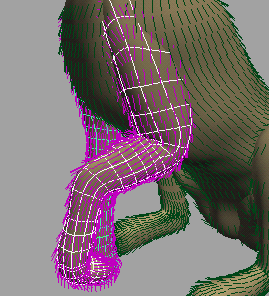
 .
.
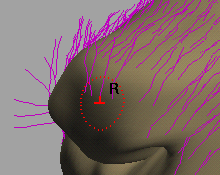
 .
.

 .
.
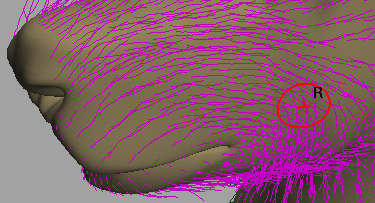
 .
.


 .
.
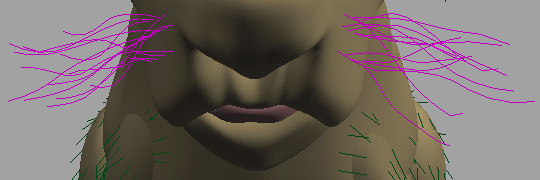
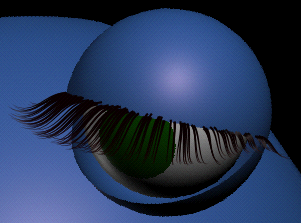

 .
.
